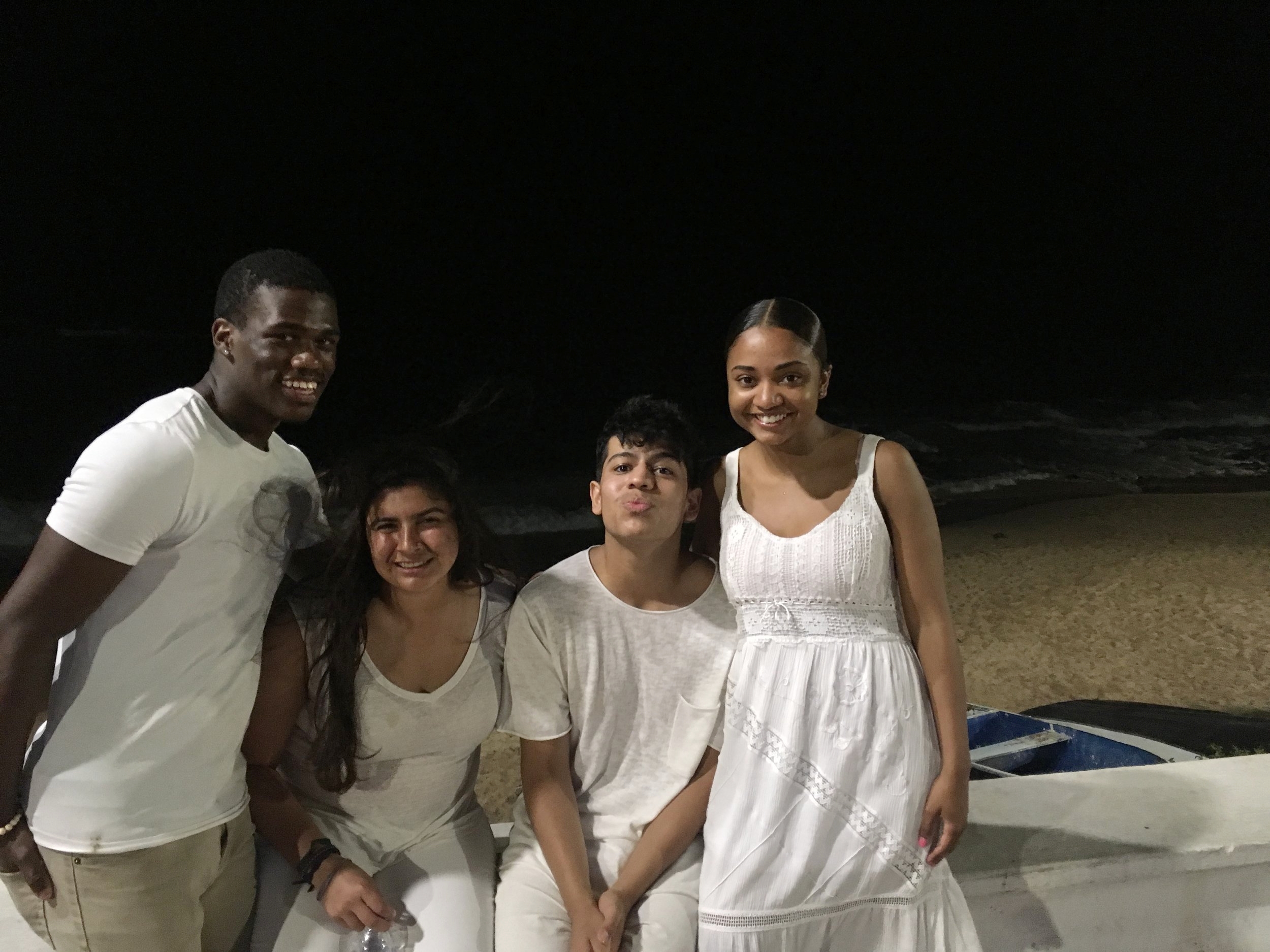Perla Figuereo '21 contributes our last post on Salvador da Bahia with thoughts on maracatu and Candomblé. Photos from the Candomblé ceremony we attended are available on Facebook.
On May 5th, our last full day in Salvador da Bahia, Afro-Brazil really came alive. Although throughout our week in Salvador, we were constantly exposed to what it means to be Afro-Brazilian or negro in Brazil, the last day allowed me to experience practices and rituals that closely tie Brazilians to their African roots.
We woke up early on that saturday morning and took a bus to Praça Dois de Julho (Largo do Campo Grande), where we met Josy Garcia. Josy is part of Maracatu Ventos de Ouro, a feminist Maracatu group, that promotes leadership among women, and allows for women to practice and lead Maracatu.
Josy spoke to us about the history of the feminist Maracatu group, and emphasized the rarity of an all women group. After the history lesson, she proceeded to describe each instrument and their functionality.
I was very excited to start playing, so I grabbed the alfaia, rope-tuned bass drum. I was shocked to see how hard it was. Keeping the beat was extremely hard. You start getting into the flow, and then you notice that you are speeding. Josy was very hard on us about keeping the beat and rhythm. Sem correr! Tá correndo! She said that our consistent beats are what carry the Maracatu. I could feel that when the instruments were meshing together, we felt this sense of unity. We were one.
This made me think of how this musical practice came to be. This sense of unity was probably very important for the slaves that were brought over to Brazil. In times were they were not treated as humans and their rights were stripped, this sense of unity to each other probably became a mode of comfort, of home. Because of this, I felt that I needed to honor this beat that was unifying all of us, even if it was hard.
s33 students prepare for a Candomblé ceremony by wearing traditional white dress.
At night, we visited an elaborate terreiro de Candomblé in nearby city Lauro de Freitas. When we arrived at the terreiro, the vibe was very different than other parts of Brazil. The place was very quiet, everyone looked like they knew each other, and there were a lot of black and brown bodies that appeared to be in positions of power in the religion.
When the celebration started, I felt very out of place. I felt a lot of the older black women’s eyes on me. This made me feel as if they were trying to figure out my place in this place. After getting over the stares, I was able to focus on the ceremony. I noticed that drums were what carried the celebration. The men who were playing the drums looked like they were feeling the music. They were smiling and feeling every beat that they played. This made me think of what we did earlier in the morning. The importance of the drum was breathtaking. From the dancing, to the singing, to even when people clapped, all was led by the drums.
Kyle Larry '21, Miranda Padilla '19, Sebastián Gallegos '19, and Maya Church '20 await our van to Lauro de Freitas.
Ellie Friends '21 and Perla Figuereo '21 strike a pose on the coast of Salvador.
This ceremony and the drumming session we had earlier that day, was just a small example of the complexity of blackness and black culture. It is amazing to see how many different aspects make a culture. But, what I realized the most is that blackness is so diverse. These traditions that we were part of were just a small portion that is not representative of the thousands of differences in what we consider blackness.
Throughout my last day in Salvador, I was also reflecting on my identity as a black woman. Though I consider myself an Afro-Latina, I still do not find myself having the connection that a lot of Afro-Brazilians have with their roots. I envied this closeness, but instead of feeling bad about it, I decided to embrace the exposure I had to the culture.


